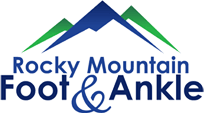Understanding the Causes of Adult-Acquired Flatfoot
Adult onset flat-footedness has no single cause. However, some people are much more likely to develop adult-acquired flatfoot than others. The main risk factors for adult flatfoot include the following:
- Advanced age
- Certain chronic diseases and disorders
- A history of wearing inappropriate or ill-fitting footwear
- Lifestyle choices
Risk factors like carrying excess weight and aging can have a profound effect on the body, putting irregular and immense amounts of pressure on the feet and their underlying structure. In most adults, for instance, flat-footedness can be traced back to the failure of a large tendon connecting the ankle and lower leg. This tendon—the posterior tibial tendon—plays a critical role in movement, both by supporting the foot’s musculature and by creating its natural arch. However, when it becomes stretched and overextended, the posterior tibial arch can inflame and thicken, worsening over time and making almost any activity incredibly painful.
Other common explanations for adult-acquired flatfoot include the following.
Injuries
Any serious injury to the foot’s ligaments can cause a misalignment of its joints, preventing the foot’s musculoskeletal system from receiving proper support. Athletes and overweight adults are both at high risk of ligament-related injuries, especially tears.
Arthritis
Inflammatory arthritis, like rheumatoid arthritis, can also cause flatfoot. Since arthritis attacks both cartilage and ligaments, it can be the source of both flatfoot-related pain and flatfoot-related disfigurement.
Diabetic Collapse
People with diabetes sometimes suffer from Charcot foot, a nerve problem that can make it difficult to sense injuries. This can result in unusual deformities, like adult-acquired flatfoot.
Treatment Options for Adult Flat Feet
Rocky Mountain Foot & Ankle’s experienced team of board-certified podiatrists has spent years helping our patients combat flat feet and other serious foot-related conditions. We can help you overcome your adult-acquired flatfoot through the following.
Physical Therapy and Stretching Exercises
Physical therapy and stretching exercises can help relieve flatfoot-related pain and rebuild collapsed arches. These exercises are usually intended to mitigate stiffness, reduce tightness, and correct muscular imbalances.
Orthotics
Orthotics are custom-made prescription devices that look like shoes or insoles. They are usually created using detailed maps of your feet and may be designed to correct certain problems. Custom orthotics can, for instance, provide additional support while also offering enough cushion to reduce pain while walking.
Surgery
Surgery is typically recommended only when adult-acquired flatfoot is not responsive to other treatments and imposes limitations on your life. Flat foot surgery usually involves the repair of loose or torn tendons or the realigning of bones in the foot.

.jpeg)
